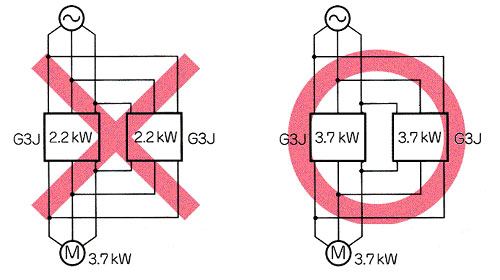Is it possible to connect Solid-state Relays in parallel?
Yes, it is.
Solid-state Relays are connected in parallel mainly to prevent open circuit failures.
Usually, only one of the Solid-state Relays is turned ON, keeping the other Solid-state Relay in the OFF state, due to the difference in output ON voltage drop between the Solid-state Relays. Therefore, do not connect two or more Solid-state Relays in parallel to drive a load exceeding the capacity of each Solid-state Relay. Otherwise, Solid-state Relays may fail to operate.
It is not possible to increase the load current by connecting the Solid-state Relays in parallel.
However, if an ON-state Solid-state Relay in operation is open, the other Solid-state Relay will turn ON when the voltage is applied, thus maintaining the switching operation of the load.
